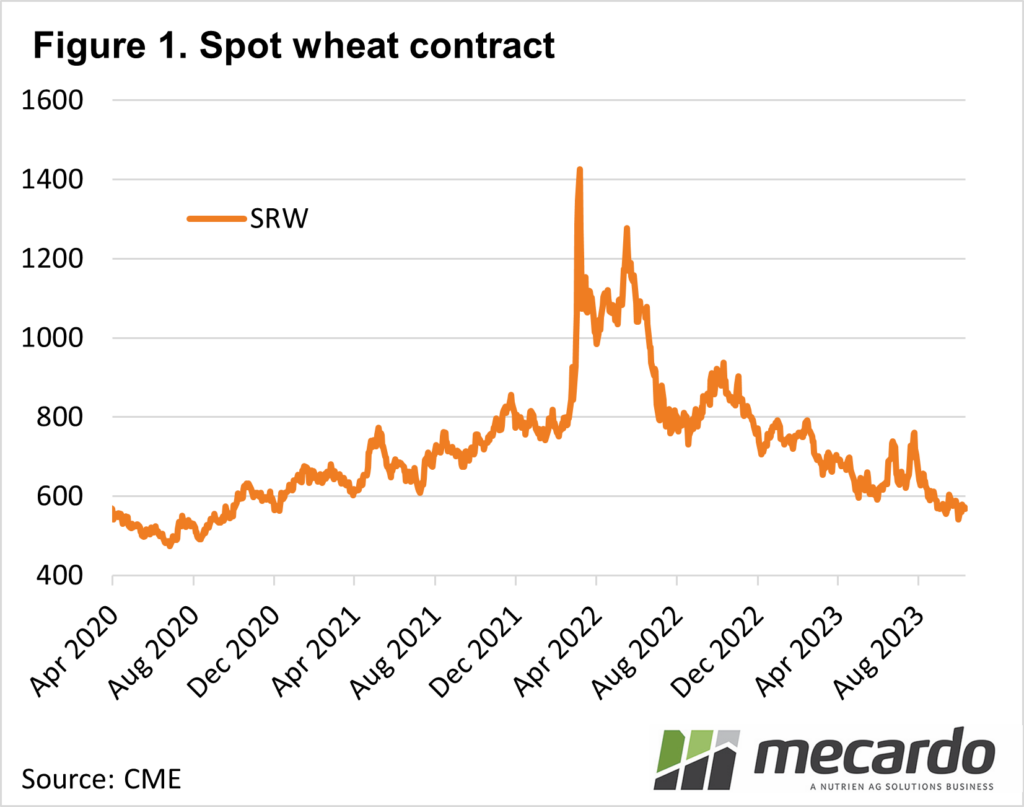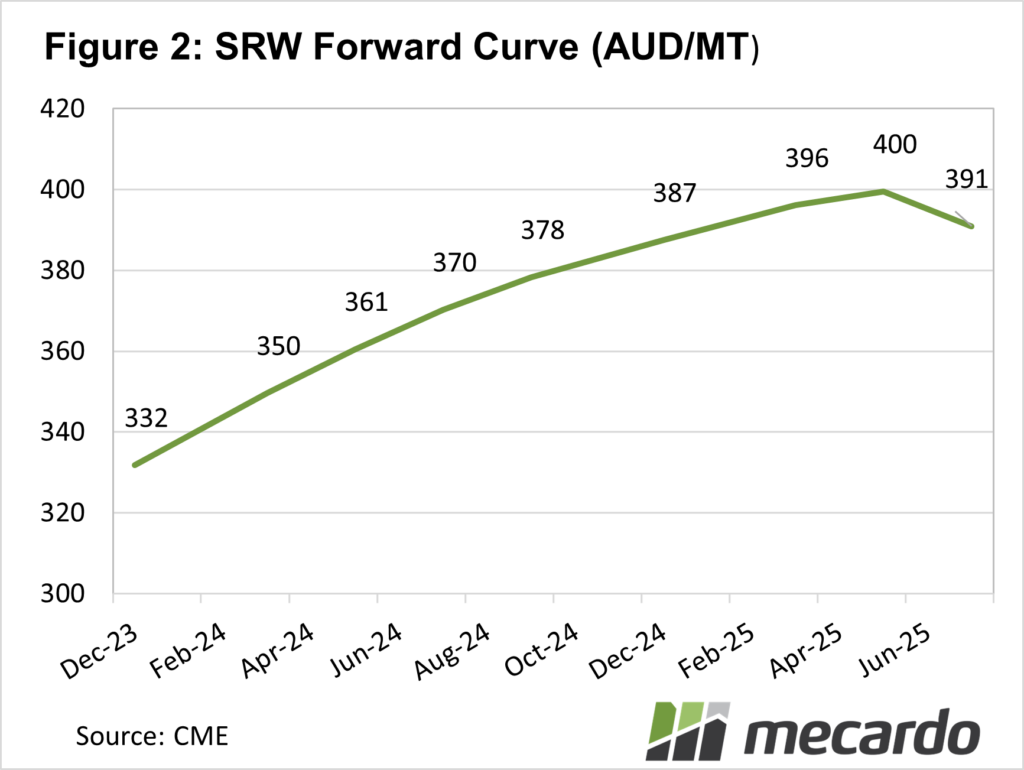As outlined in Friday’s weekly comment, US wheat currently looks oversold. For wheat and cereal consumers here, that is of little comfort, with local prices remaining stubbornly strong. It does, however, create opportunities for next season.
Fundamentally wheat looks cheap. World supplies are only okay, stocks are likely to dwindle this year, and Russia and Ukraine are still at war. The recent decline in Chicago Soft Red Wheat (SRW) does seem counter-intuitive.
Figure 1 shows SRW last week fell to 541¢/bushels, a three-year low, before bouncing a little, sitting at 578¢/bushels on Monday. It was only in July that SRW peaked at 757¢/bushels on the back of some tension in the Black Sea.
With wheat close to a three-year low, in the current environment, it looks like good buying. We know that locally dry conditions and a weaker crop are going to see price hold a hefty premium to SRW, but that doesn’t mean SRW can’t be used to manage 2024-25 grain buy prices.
There are plenty of factors that could push wheat higher over the coming year, and there is seemingly less downside risk. Chicago SRW Futures are factoring this in, with the curve in Figure 2 showing an increase in price at around the cost of carry.
This is normal in a post-harvest market, as the price of wheat in the futures market equals the price now plus the cost of storage and interest.
For December 24 SRW is currently priced around $387/t. While a hefty premium to the current market, it should be remembered that back in just July, prices were stronger than this. The scary thing for consumers should be thinking about SRW back at $500/t, which is entirely plausible with erratic climatic and geopolitical conditions.
What does it mean?
The wheat market looks oversold, and it’s hard to take advantage of that with physical wheat being at such a strong premium to international. Buying wheat for Dec-24 now on futures leaves basis open to depreciation with a better crop next year, and protects against a potentially strong upside.
Have any questions or comments?
Key Points
- Chicago SRW is sitting close to a three-year low thanks to speculators.
- Futures are at a premium to spot, which is the normal cost of carry.
- Buying futures can protect consumers from significant price upside.
Click on figure to expand
Click on figure to expand
Data sources: CME, Refinitiv, Mecardo



